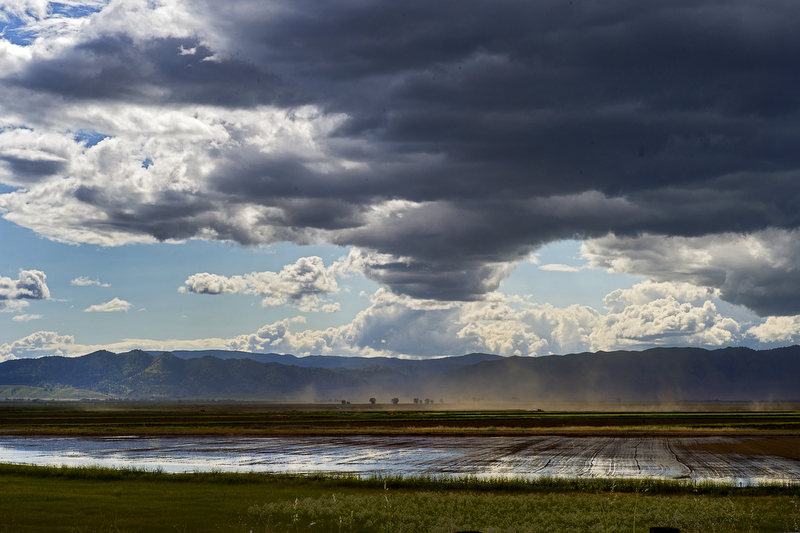After going so long without meaningful rainfall in this third year of California’s drought, the recent storms and the precipitation they have brought are a welcome change. But, while the rainfall and snow are much needed, the overall quantity of the precipitation as well as where it is falling has limited the impact it is having on the drought.
The good news is that by November 26 the State Water Resources Control Board lifted the curtailments on water rights and the Term 91 restrictions on diversions, allowing reservoirs in Northern California to begin storing water behind the dams. This is important because this carry-over storage is the only reason that California’s drought impacts were not even more catastrophic the last couple of years.

But, since the curtailments and Term 91 have been lifted, reservoirs throughout the region have only experienced minor increases in storage. According to the Department of Water Resources, Shasta Reservoir in the north has stored 76,348 additional acre-feet, but is still only 25 percent full, which is 42 percent of average storage for this time of year. In the Sierra Nevada foothills, Lake Oroville has seen an increase of 115,096 acre-feet, but is only 29 percent full, which is 48 percent of average; New Bullards Bar Reservoir has added 15,765 acre-feet, is 42 percent full, which is 76 percent of normal; and, Folsom Reservoir has experienced a 40,974 acre-feet increase and is 33 percent full, which is 68 percent of average. In the Coast Range, Indian Valley Reservoir has only increased storage by 3,665 acre-feet, is 9 percent full, which is 17 percent of normal. With additional rains, the reservoirs should fill at a more rapid pace now that the ground is saturated. A considerable portion of the rain to date soaked into the very dry ground rather than flowing down to fill reservoirs.
More storms are needed like the one we are forecasted to have later this week. But, in addition to increasing the quantity of rain and snow falling in the state, we also need for it to fall in the right places. Storms that pass over the state south of Sacramento do little to help water availability during the irrigation season because the water cannot be held in the reservoirs in the region until it is needed. In order to provide a benefit to storage, the precipitation must fall above the reservoirs. If not, the water currently cannot be captured and flows out to the ocean.
Adding an off-stream regulating project like Sites Reservoir to the system would provide great benefit to water management in the State. Sites would add up to 1.8 million acre-feet of storage capacity to the system. It also could take advantage of sporadic winter storms because it would be able to fill very quickly. It would take only two rainy months like we are currently experiencing, even in a drought year like this one, to put 500,000 acre-feet of water in Sites. That is enough water to meet the needs of one million households, or four million people (more than reside in the City of Los Angeles) for one year.
For now, we can hope for continued rainy weather and that the storms take a northern trajectory as they make their way across the state. The more precipitation falling above the reservoirs in northern California the better off we all will be next year. But, as we look forward to the much needed storage investments from Proposition 1, we should remember the drought years and invest in projects such as Sites, which can rebound quickly and provide much needed assistance to the state’s water management system.



